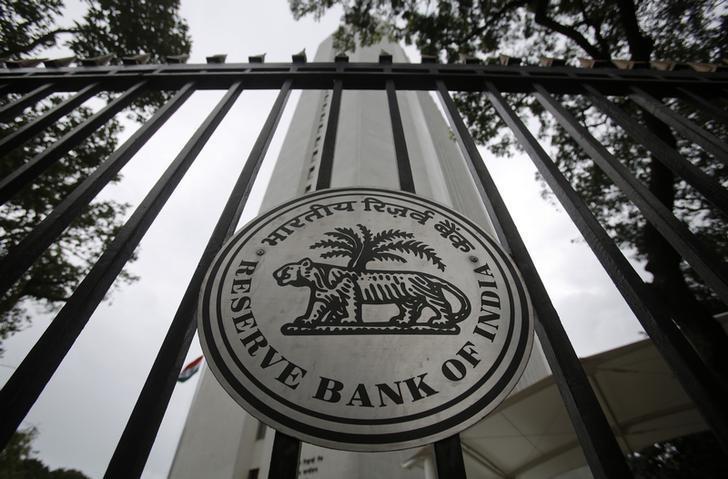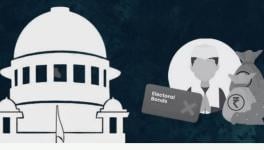Whose Interest Does the RBI Represent?

For now, the Reserve Bank of India (RBI) and the government have called a truce. That truce came after a marathon nine-hour board meeting on Monday. The RBI appears to have blinked under the steady gaze of the Finance Ministry. They have agreed to dilute some elements of the Prompt Corrective Action (PCA) framework, and appoint a committee to examine the economic capital (the amount of capital required to stay solvent). The PCA framework specifies the level at which the RBI can intervene with corrective action.
For the last financial year, the RBI transferred a surplus of Rs 500 billion (Rs 50,000 crore). But transfer of more reserves to meet the Centre’s demands are difficult. Part of the surpluses with the RBI are due to changes in asset values, particularly gold prices. The RBI has a gold horde of 566 tonnes. This horde is at present worth Rs 1,442 billion (Rs 1.44 lakh crore). The RBI values the gold based on the London bullion price. In June 2016, gold prices were $ 1,256 an ounce. But in June 2018, the price was $ 1,250/ounce. This means gold prices appear to have depreciated slightly. This would imply that the RBI would need to make provision for depreciation. And that depreciation would need to come from the buffer or the economic capital.
Impact of US Interest Rates
However, some assets with the central bank also face steep depreciation risks. Therefore, the large requirement for economic capital is not just for meeting those risks. That includes the near certainty of increases in US interest rates. It may sound incredible, but India’s sovereign central bank is vulnerable as and when the US Federal Reserve hikes rates. This vulnerability has escalated after the RBI’s leadership changed in 2014.
Since 2013, after International Monetary Fund’s and Goldman Sach’s poster boy, Raghuram Rajan, took over as RBI governor, investments in US treasury securities increased. In June 2014, the holdings of US treasuries were worth $75 billion. This was despite the fact that the then US Fed chairperson, Janet Yellen, quietly withdrew from dollar liquidity expansion or Quantitative Expansion(QE) that was initiated in 2008. Ideally, that move should have conveyed that dollar treasury yields were expected to harden or that dollar treasury investments of the RBI would depreciate in value.
Instead, the RBI actually raised the holdings to $120 billion as on June 30, 2016. A major reason for the accumulation of US treasuries was partly due to the inflows from foreign institutional investors during the period and the resulting foreign currency reserve accretion during the period.
The expansion in US treasury holdings continued even after Urjit Patel, a former IMF India resident representative, took over as RBI Governor in 2016. By then the US Fed had already implemented two hikes in rates. Yet, investments in US treasuries continued to increase. In 2017, US treasury holdings were $134 billion. In March 2018, those holdings stood at $157 billion.
This was despite the fact that since 2016, ten-year US treasury (considered a benchmark) yields had firmed to 0.58% from 0.18% in 2016. Clearly, the RBI had overlooked the impact of the US Fed’s reversal of quantitative expansion. At present, the reversal still continues, or as one wag put it, “attempts are still underway to get the toothpaste back into the tube.”
Tightening Liquidity & Forex Reserves
In the six years during the QE regime, dollar liquidity expansion was occurring at $40 billion per month.At present, the reversal, implying US government borrowings, translate to about $9 billion a month. This means that dollar liquidity is tightening. And that showed up in the10-year dollar yields, which is now 1.10%.
Obviously, the sharp rise in yields would mean greater need for economic capital for the RBI. This is because as yields rise further, the need for risk capital or economic capital, increases. This is especially so in view of the large treasury holdings. Large holdings of foreign securities, implies that depreciation risks are also proportionate.
Since the RBI can only rely largely on itself, it would have to create far larger buffers, partly by keeping policy interest rates repurchase and reverse repurchase rates high. Policy rates range from 6.25% and 6.5%. Obviously, countries that maintain large foreign currency reserves would need to have large economic capital buffers, by resorting to high domestic lending rates. So, it appears that Rashtriya Swayamsevak Sangh ideologue S. Gurumurthy’s (who has been recently inducted into the RBI board) case lacks substance. (He called for lower reserves and chided the apex bank for being too tough on banks to get rid of mounting bad loans).
The second element of the dispute between the Centre and the RBI is interest rates. Interest rates are not just function of inflation alone. Inflation is just one parameter. Liquidity is a key determinant in interest rates. But liquidity in the Indian financial markets is actually tightening. This is because, high-powered liquidity, or reserve money, has expanded largely on account of foreign currency inflows. So, if foreign currency reserves increase leads to domestic liquidity expansion, it is axiomatic that a reversal would translate to liquidity contraction. Foreign currency reserves at the moment are facing depletion largely due to withdrawals by portfolio investors and oil import payments. That, in turn, translates to pressures on domestic liquidity.
So, are there other ways of expanding liquidity? Till the mid-1990s, domestic liquidity expansion was largely driven by government fiscal expenditure. High fiscal deficits meant that government resorted to borrowing from the RBI. With improved tax collections and tight fiscal controls in the place, fiscal deficits are restricted to 3.5% of gross domestic product. This also means that borrowings from the Centre are restricted, meaning reserve money expansion is limited.
Some government borrowings though are still made through private placements with the RBI, but insufficient for making any substantial expansion domestic liquidity. The major component of borrowings still come from direct auctions, that function to take out bank liquidity. The tight liquidity conditions, resulting from the rupee- dollar linkage, restricts the RBI’s ability to manoeuvre interest rates.
A Case for Privatisation of Banks?
The third factor creating friction between the RBI and the government is the issue of PCA measures. PCA normally kicks in when the banks fall below the threshold regulatory capital of 9% , high non-performing assets or bad loans and on the basis of a leveraging ratio, as prescribed by the Bank for international Settlements (BIS sets a minimum leveraging ratio of 3%, which mandates that banks’ common stock plus their reserves need to be at least 3% of the value of their balance sheet and off balance sheet assets).
A minimum of 9% of regulatory capital combined with the leveraging ratio of 3% would mean that either lending would need to be restricted or banks would need to be further capitalised to expand lending for meeting growth objectives. Both these norms essentially imply a case for privatisation of banks. RBI Deputy Governor, Viral Acharya, former New York University Stern school of business professor, in a speech some time ago had argued precisely for privatisation. Acharya in his speech had said, “Perhaps re-privatising some of the nationalised banks is an idea whose time has come?”
Acharya’s speech, of course, overlooks the fundamental fact that non-performing assets (NPAs) in India are largely overestimated due to application of Basel-III norms. This is especially so in the farm sector, where the NPA norms kick in after 90 days from the harvest, whereas farmers’ incomes start only after 180 days. Second, what is also missed is that unlike global lending norms, Indian lenders follow tight asset coverage norms. That means that collateral value needs to be at least 150% of the value of the loan.
Besides, what the RBI’s poster boys also missed is that privatisation does not obviate bad credits, fictitious assets or banking collapses and government bailouts. In the 2008 bailout of US banks, it was taxpayer money that was used. On an average, at least $40 billion per month was doled for purchasing dud mortgages for bailing out banks. Has anything of that kind ever occurred in the Indian banking system after nationalisation in 1969?
Moreover, although Indian banks appear to be using government funds, in reality they are actually a circular flow of funds. A clear instance of this is the statutory liquidity ratio (SLR). Under present norms, Indian banks are expected to mandated to park at least 19.5% of their deposits in government securities as SLR. This means that at least Rs 20 lakh crore is removed from the banking system by way of mandated government borrowings. It is a small portion of these funds that return as capital to the banks. For instance, the Rs 1.35 lakh crore capital support to public sector banks is barely 5% of what is removed from depositors funds through the SLR.
In reality, public interest is already high in the banking system. But the RBI’s dispute with the government is a clear pointer that private interests are being advanced in the banking system over public interest. In the history of contemporary centralbanking, blatant plugging for private interest has seldom occurred. So, the question is: Whose interests does the RBI represent?
The writer has over 30 years of experience in financial journalism, including Business Standard and Hindu Business Line. He has also been a foreign exchange trader in a well-known broking company. The views expressed are personal.
Get the latest reports & analysis with people's perspective on Protests, movements & deep analytical videos, discussions of the current affairs in your Telegram app. Subscribe to NewsClick's Telegram channel & get Real-Time updates on stories, as they get published on our website.
























